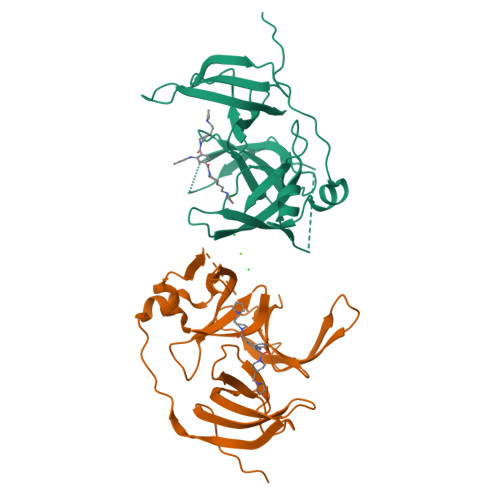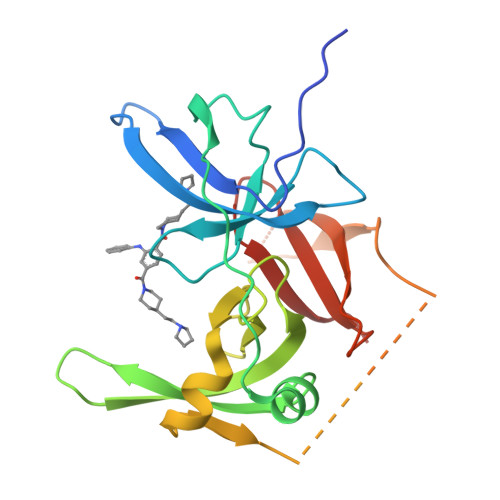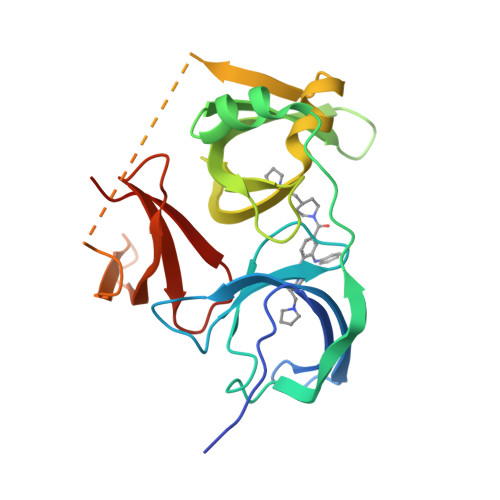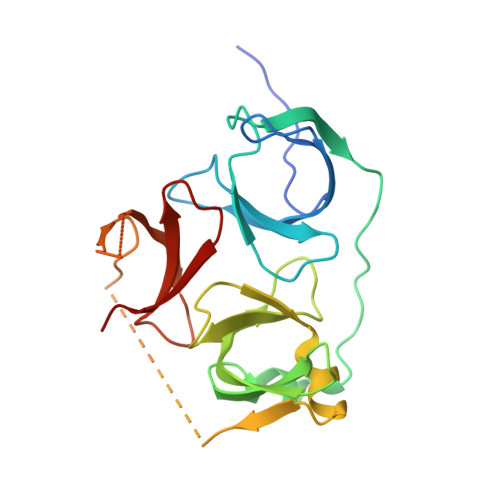Developing Spindlin1 small-molecule inhibitors by using protein microarrays
Bae, N., Viviano, M., Su, X., Lv, J., Cheng, D., Sagum, C., Castellano, S., Bai, X., Johnson, C., Khalil, M.I., Shen, J., Chen, K., Li, H., Sbardella, G., Bedford, M.T.(2017) Nat Chem Biol 13: 750-756
- PubMed: 28504676
- DOI: https://doi.org/10.1038/nchembio.2377
- Primary Citation of Related Structures:
5JSG, 5JSJ - PubMed Abstract:
The discovery of inhibitors of methyl- and acetyl-binding domains has provided evidence for the 'druggability' of epigenetic effector molecules. The small-molecule probe UNC1215 prevents methyl-dependent protein-protein interactions by engaging the aromatic cage of MBT domains and, with lower affinity, Tudor domains. Using a library of tagged UNC1215 analogs, we screened a protein-domain microarray of human methyllysine effector molecules to rapidly detect compounds with new binding profiles with either increased or decreased specificity. Using this approach, we identified a compound (EML405) that acquired a novel interaction with the Tudor-domain-containing protein Spindlin1 (SPIN1). Structural studies facilitated the rational synthesis of SPIN1 inhibitors with increased selectivity (EML631-633), which engage SPIN1 in cells, block its ability to 'read' H3K4me3 marks and inhibit its transcriptional-coactivator activity. Protein microarrays can thus be used as a platform to 'target-hop' and identify small molecules that bind and compete with domain-motif interactions.
Organizational Affiliation:
Department of Epigenetics and Molecular Carcinogenesis, University of Texas MD Anderson Cancer Center, Smithville, Texas, USA.






















